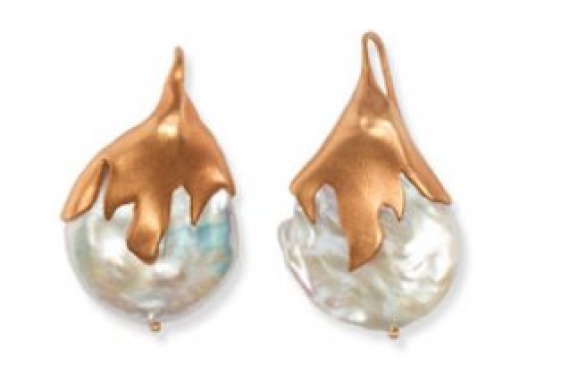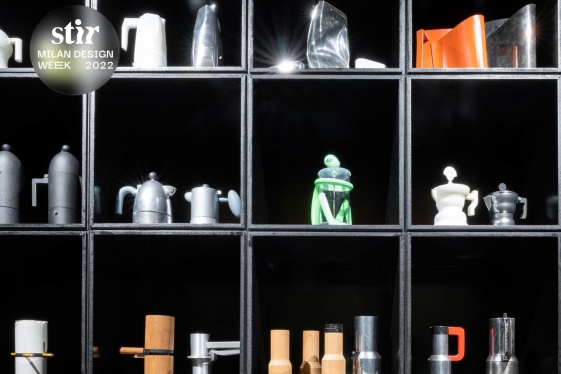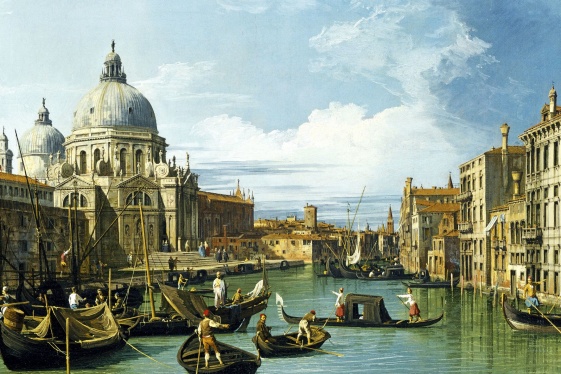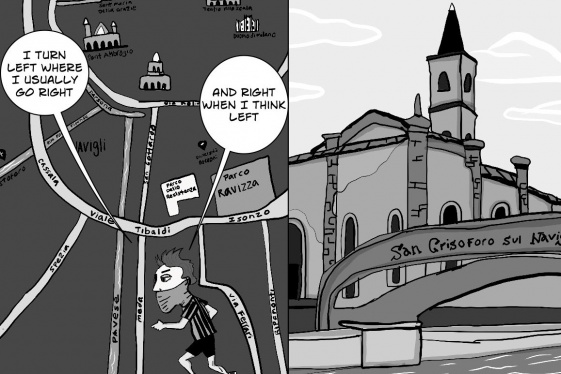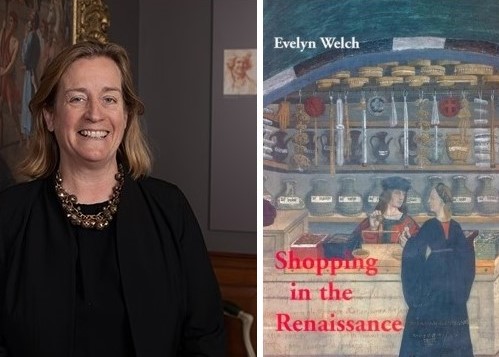

In this season of holiday gift-giving and round-the-clock shopping, you might wonder about the origins of the madness: How did we become such ardent consumers? When did shopping become a social/leisure activity? Look no further than 15th and 16th century Renaissance Italy for answers.
It was during this period that the production and consumption of material goods skyrocketed. There’s enough evidence in primary sources such as the diaries, inventories and accounts of the elite as well as ordinary people, including detailed wills and testaments, to support the notion that the acquisition of material goods – from artwork and antiquities, to fabrics, furnishings and jewelry – was a highly desirable activity.
Evelyn Welch, a leading scholar of the Renaissance, writes about consumer culture in 1400 to 1600 Italy in her fascinating book, Shopping in the Renaissance. She introduces us to the experience of the Renaissance marketplace, from geography to architecture, and examines the consumers themselves, including the intricate customs and codes of conduct connected with buying and selling.
Welch notes that many studies of consumer culture tie our love affair with shopping to the 18th and 19th century development of the first department stores in London and France. It makes sense that consumption would have grown in this period of great change and abundance of mass produced goods. Recently, however, the argument has been made that consumerism in 15th century Italy predates the consumer boom in London or Paris. Richard Goldthwaite*, one of the foremost economic historians of the Italian Renaissance, uses the phrase conspicuous consumption to describe the economic activity of the Renaissance. In his view, the rampant consumer culture in the Renaissance would reach a “veritable revolutionary stage in the 18th century and eventually culminate in the extravagant throw-away, fashion-ridden commodity culture of our own times.”
Shopping as entertainment started in the Renaissance
Shopping for pleasure (for non-essentials, that is) traces, in at least one instance, to 1491 Milan, says Welch. It was rare for women of privilege to do any shopping directly, but it was no less a temptation. Welch quotes an amusing section of a letter received by Isabella d’Este, the Marchioness of Mantua, a powerful, well-educated political figure and patron of the arts, from her brother-in-law, Ludovico Maria Sforza of Milan (Il Moro), recounting a ‘shopping’ outing his 16-year old wife, Beatrice d’Este, the sister of Isabella d’Este, had taken with an equally young cousin, the Duchess of Milan, Isabella of Aragon.
The young women had gone into the rainy Milanese streets accompanied by “four to six of their ladies, wearing little woolen cloths, or headdresses over heads in order to buy those things which are available in the city (per andare a comparare de le cose che sono per la citta’).” There’s more to the story in the sense that the woolen cloths they wore were unusual and resulted in “villainous remarks” being hurled at the noblewomen. There’s also the usual Renaissance intrigue in that Ludovico’s mistress, Cecilia Gallerani (whose portrait was painted by Leonardo da Vinci) was living at the time he wrote his letter to Isabella at the Sforza palace in Milan, awaiting the birth of his child.
The point of this historical digression? In the exchange, the concept of shopping – of buying ‘things available in the city’ was portrayed as entertainment – a leisure activity from which the young women derived enjoyment and had the chance to experience the market and its people. (Interestingly, Welch makes the point that “there is no correlating word, no verbal connection in any other European language between the word ‘shop’ and the activity of ‘shopping.’”)
The right environment for consumerism to flourish
What made 15th/16th century Italy the perfect breeding ground for consumerism? For one thing, Italy had moved on from the ravages of the Black Death. While the plague had decimated the population of Italy and all of Europe, in its wake, Italy had become a place of relative wealth and abundance. With the smaller labor pool, wages rose, and skilled artisans flourished, fueling the growth of the luxury-crafts sector of the economy. At the same time, wealth accumulation increased, with greater purchasing power. Italy had become Europe’s most developed economy, says Goldthwaite, a leader in the production of wool, silk and cotton. It monopolized the luxury trade in imports from the Near East and distributed them throughout northern Europe. It controlled maritime transport. The Italians had become Europe’s premier bankers, with Florence at the center.
The result was an extraordinary abundance and variety of goods and an insatiable appetite for their production and acquisition. Wealth and robust spending habits fueled commerce, along with desire for objects, luxuries, and art to decorate and furnish homes and religious settings, not to mention fabrics, clothing, and jewels for personal adornment.
Venice of the period stands out as an example the Renaissance marketplace at its height. The city was an important center of international trade as well as local commerce, exceptional in its sophistication and specialization. There were new types of purpose-driven shops, such as the vendecolori, which sold pigments for painters who satisfied the demand for artwork, as well as the drapperie near the Rialto bridge, where shoppers bought textiles. Innovations and new products abounded in the marketplaces, including less costly fabrics that looked like silk and velvet. With the proliferation of commercial printing, women bought printed embellishments for the fans, the original DIY (do it yourself) experience.
A return to Main Street shopping?
We are in the throes of yet another shopping transformation, courtesy of online commerce. You might ask if physical shopping in ‘brick and mortar’ stores is dead. Is the shopping experience had by Beatrice d’Este and her young friends in Milan soon to be a thing of the past?
As it turns out corporations are buying up defunct Main Streets in America – as in entire street fronts – to revive the personal connection shoppers had with shop owners and communities. A report in the New York Times says Walmart plans to build ‘reimagined centers’ or “faux towns” adjacent to eight Walmart stores. The ‘centers’ will be a “a carefully curated mix” of food, shopping, services (day care and pet care) and entertainment. That’s one way to continue to stoke consumerism. Who knows, maybe Walmart will one day recreate a rich and varied Renaissance shopping experience?
* References in this article to Richard A. Goldthwaite’s scholarship are taken from his journal article, “The Economy of Renaissance Italy: The Preconditions for Luxury Consumption.” I Tatti Studies in the Italian Renaissance, vol. 2, 1987, pp. 15–39.
You may be interested
-
Italian auto supplier Brembo to build new U....
Italian brakes maker Brembo will build a new foundry in Michigan to expand its manufacturi...
-
L'Arte del Gioiello Italiano - Lecture and T...
How has Italy influenced the world of Jewelry? Join us for a special lecture on the a...
-
'A small New York': Palm Beach to become home...
Miami-born and Italy-raised, jewelry designer and accomplished equestrian Lucrezia Buccell...
-
'Alessi 100-001' celebrates 100 years of Ales...
Iconic Italian design brand Alessi is celebrating its centennial with an exhibition titled...
-
'Canaletto and the Art of Venice' comes to BF...
RAMParts Presents, in partnership with Exhibition on Screen, brings the 90-minute feature...
-
'Ducale' by KREOO to Be Featured at Studium S...
NYC tile and surfaces showroom STUDIUM will be offering "Ducale" by KREOO (USA), a luxury...
-
'I'm part of this crazy history': Finding ins...
Everyone in Italy has felt the effects of the Covid-19 pandemic. For Adam Rugnetta, an Am...
-
'Italian Bred' Staten Island native brings he...
Watch for actress/playwright Candice Guardino's "Italian Bred" at the famed Paramount Thea...




